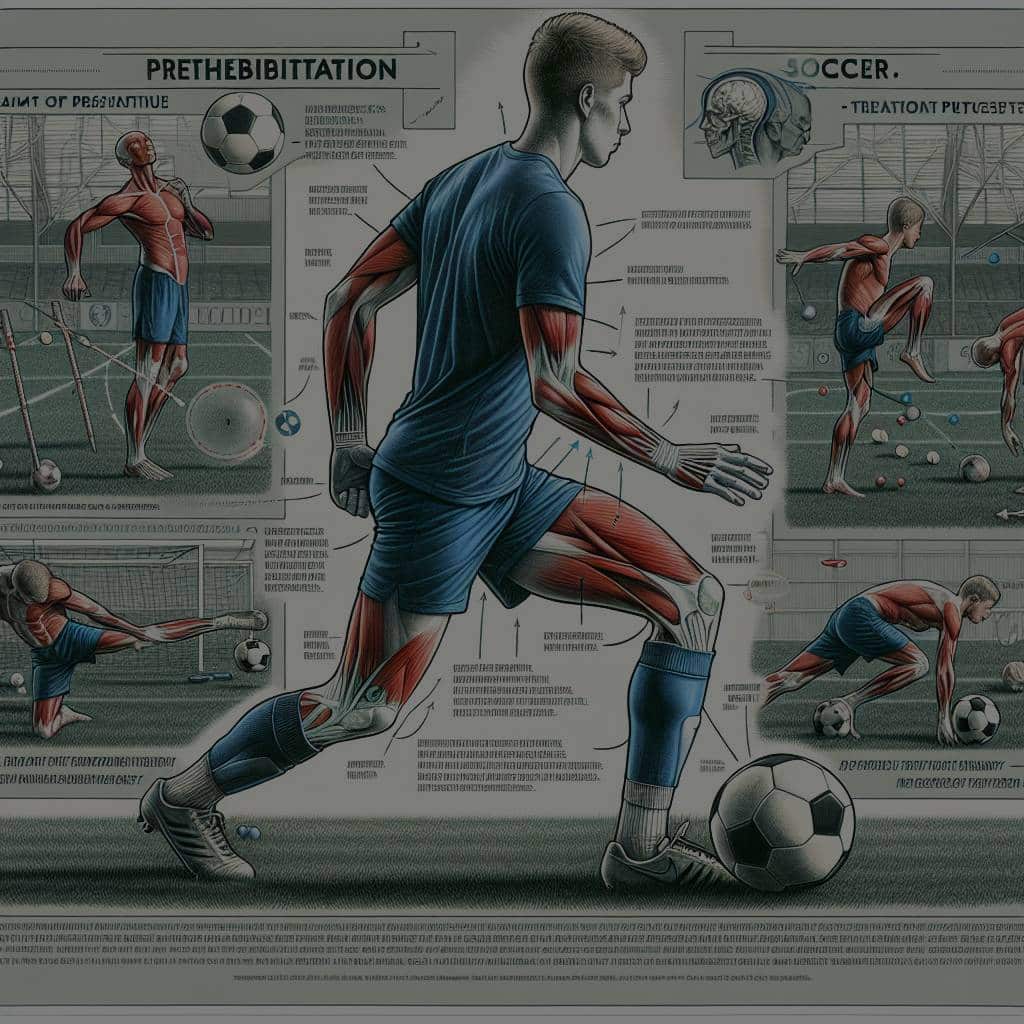What’s the Role of Prehabilitation Exercises in Reducing Soccer Injuries?

Soccer, one of the most popular sports globally, is characterized by its intensity and physical demands, which can often lead to a slew of injuries. Player safety is paramount, and the key to decreasing the risk of these injuries lies in a concept known as ‘prehab’.
Prehab, or prehabilitation, refers to a series of exercises designed to strengthen the body and prepare it for the physical strain of sports. In soccer, where injuries like ACL and hamstring tears are common, prehab can be a game changer. In this article, we will delve into the role of prehab exercises in reducing soccer injuries, and the importance of incorporating these routines into a player’s training regimen.
In the same genre : How Can Dynamic Stretching Improve Flexibility in Ballet Dancers Who Play Sports?
Understanding Soccer Injuries
Before we can explore the benefits of prehab exercises, it’s essential to understand the nature and prevalence of soccer injuries. Here, we will examine the most common types of injuries in soccer, and the areas of the body they typically impact.
Soccer players are at a constant risk of injury given the physical nature of the sport. A split-second decision can result in a player having a direct collision with an opponent, or a wrong footing can lead to leg or knee injuries. The two most common injuries in soccer are anterior cruciate ligament (ACL) tears and hamstring injuries. An ACL injury generally happens when a player suddenly stops, jumps, or changes direction. On the other hand, a hamstring injury is caused by an overstretch or tear in one or more of the hamstring muscles at the back of the thigh.
This might interest you : Can Tailored Yoga Sequences Improve Flexibility in Martial Artists?
Moreover, leg injuries are common in soccer, which can range from minor shin splints to the more serious broken leg. Thus, it becomes crucial for players to take preventive measures to reduce the risk of such injuries.
The Concept of Prehab
Prehab is a proactive approach that focuses on identifying and addressing an individual’s weaknesses before they lead to an injury. It involves a range of exercises aimed at improving strength, stability, mobility, and overall athletic performance.
The goal behind prehab is to prepare the body for the physical stress that sports impose. By doing so, it can help reduce the risk of injury, improve athletic performance, and even aid in quicker recovery post-injury. Prehab exercises typically target the muscles and ligaments that are most prone to injury in a particular sport. In the case of soccer, these would include exercises focused on the legs, knees, and the core.
Prehab Exercises for Soccer Players
Now that we understand what prehab is and why it’s important, let’s look at some specific prehab exercises that soccer players can incorporate into their training routine.
Strength training is a key component of prehab for soccer players. Strengthening the leg muscles can provide better support for the knees and reduce the risk of ACL and hamstring injuries. Squats, lunges, and calf raises are excellent exercises for this purpose.
In addition to strength training, mobility exercises are also crucial. These exercises help improve the range of motion in the joints and reduce the risk of strains and sprains. For soccer players, hip mobility exercises can be particularly beneficial as they help improve kicking and running mechanics.
Lastly, balance exercises should not be overlooked in a prehab routine. They help improve stability and control, which can prevent falls and awkward landings that can lead to injuries. Single-leg balance exercises are particularly effective for soccer players.
Incorporating Prehab into Training Regimes
Prehab should not be an afterthought, but rather, an integral part of a soccer player’s training regime. While it may seem like an extra task, the benefits it can provide in terms of injury prevention and improved performance are well worth the effort.
Incorporating prehab exercises into a soccer player’s training routine can be as simple as dedicating a portion of each training session to these exercises. It could be at the start of the session as a part of the warm-up, or at the end as a cool-down.
Moreover, it’s important to remember that prehab is not a one-size-fits-all approach. Each player may have different weaknesses and areas of concern, so the prehab exercises should be tailored to meet the individual’s needs. A physiotherapist or a trained sports medicine professional can assist in devising a personalized prehab routine.
In conclusion, prehab provides a proactive approach to injury prevention in soccer. By incorporating targeted exercises into regular training, players can enhance their performance and durability, reducing the risk of common soccer injuries. The benefits of prehab are manifold, making it an important part of any athlete’s training regimen.
The Effectiveness of Prehab Exercises in Soccer
While the effectiveness of prehab exercises may appear subjective, there is a growing body of evidence that supports the potential of these exercises in reducing the risk of injuries in soccer players. A systematic review of various research studies provides a more comprehensive understanding of the role of prehab in preventing soccer injuries.
One particular area where prehab exercises have shown significant effectiveness is in reducing the risk of ACL injuries – one of the most common and severe injuries in soccer. This injury happens when the Anterior Cruciate Ligament, a major stabilizing ligament in the knee, is strained or torn. A systematic review of several studies found that prehab exercises focusing on strength training, balance, and core stability could lower the risk of ACL injuries by up to 50%.
Likewise, the Nordic hamstring exercise, a prehab exercise specifically designed to prevent hamstring injuries, has been widely studied for its effectiveness. This exercise strengthens the hamstring muscles, making them more resistant to the forces exerted during intense physical activities like soccer. A study found that soccer players who included the Nordic hamstring exercise in their training regime reduced the incidence of hamstring injuries by up to 60%.
Other prehab exercises, such as single-leg balance exercises and core stability training, have also been investigated. These exercises enhance overall athletic performance, improve balance, and build up the core muscles, reducing the risk of falls, sprains, and overuse injuries.
In conclusion, the systematic review of various studies strongly supports the role of prehab exercises in lowering the risk of common soccer injuries. These exercises, when performed consistently and correctly, can be a game-changer in the field of sports medicine and injury prevention.
Concluding Thoughts: Prehab – A Necessity in Soccer
The demanding nature of soccer makes it ripe for a high injury incidence rate, making injury prevention a critical part of a player’s training regimen. While many approaches can be taken to prevent injuries, prehab exercises have emerged as a remarkably effective method backed by scientific research.
The unique benefit of prehab exercises is that they are proactive. They do not merely treat injuries but prepare the body to better withstand the physical demands of soccer, thus reducing the chance of injury. From improving core stability to strengthening at-risk muscles, prehab exercises provide comprehensive training that enhances both the safety and performance of soccer players.
When implemented correctly, under the guidance of a professional in physical therapy or sports med, prehab exercises can significantly reduce the risk of common soccer injuries such as ACL and hamstring injuries. Incorporating strength training, balance exercises, and core stability training into a regular workout routine is not just beneficial but essential for soccer players.
In light of the increasing evidence supporting the effectiveness of prehab exercises in reducing the risk of soccer injuries, it is clear that these routines should no longer be an afterthought in a player’s training regime. Instead, they should be seen as a cornerstone of a comprehensive, optimal training program that promotes player safety and longevity in the sport.
It’s time for soccer players, coaches, and team managers to amplify their injury prevention strategies and embrace prehab – not just for the health and safety of the players, but for the love of the game as well.
